
A hammam, also often inaccurately called a Turkish bath by Westerners, is a type of steam bath or a place of public bathing associated with the Islamic world. It is a prominent feature in the culture of the Muslim world and was inherited from the model of the Roman thermae. Muslim bathhouses or hammams were historically found across the Middle East, North Africa, al-Andalus, Central Asia, the Indian subcontinent, and in Southeastern Europe under Ottoman rule.

Vushtrri is a city and municipality located in the Mitrovica District in Kosovo. According to the 2011 census, the town of Vushtrri has 26,964 inhabitants, while the municipality has 69,870 inhabitants. Vushtrri is surrounded by the city of Mitrovica to the north, Podujevë in the east, Obiliq in the south, Drenas in the south-west, and Skenderaj in the west. The municipality of Vushtrri has 67 villages.

The large Fatih Mosque is an Ottoman mosque off Fevzi Paşa Caddesi in the Fatih district of Istanbul, Turkey. The original mosque was constructed between 1463 and 1470 on the site of the Church of the Holy Apostles. Seriously damaged in the 1766 earthquake, it was rebuilt in 1771 to a different design. It is named after the Ottoman sultan Mehmed the Conqueror, known in Turkish as Fatih Sultan Mehmed, who conquered Constantinople in 1453.
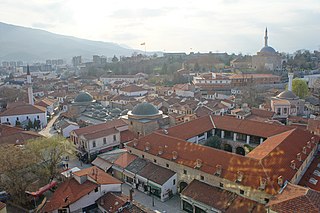
The Old Bazaar also known as Turkish Bazaar is a bazaar located in Skopje, North Macedonia, situated on the eastern bank of the Vardar River, stretching from the Stone Bridge to the Bit-Pazar and from the Skopje Fortress to the Serava river. The Old Bazaar falls primarily within the borders of Čair Municipality but a part of it is located in Centar Municipality. As one of the oldest and largest marketplaces in the Balkans, it has been Skopje's centre for trade and commerce since at least the 12th century.
Monuments of Kosovo comprise all the monuments that are located in Kosovo.

Islamic monuments in Kosovo are commonly related with the Ottoman arrival in 1389, and respectively with their effective establishment in Kosovo in 1459. However, many historical evidences show that the first encounters of Islam with the Balkans happened well before the arrival of the Ottomans and their establishment in the Balkans. Because of its proximity to the centers of Islam, i.e., Middle East, the Byzantine Empire and parts of the Balkans, including the Albanian territories and Kosovo as well, were exposed to Islam as early as in the 8th century.

Mitrovica District is one of the seven districts of Kosovo. Its administrative center and the largest city is Mitrovica. The district borders on the District of Peja to the south-west, the District of Pristina to the south and east, and the Serbia to the north and northwest.

The Great Hammam of Pristina is an Ottoman-era monument in Pristina, Kosovo. It was built in the 15th century and was part of the Imperial Mosque. During the summer and spring, it was used as a meeting place. Considered one of the most important buildings of the cultural and historical heritage, the Great Hammam of Pristina was in poor condition through the years until its restoration was approved.
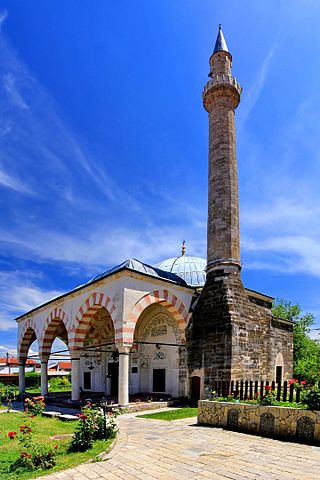
The Hadum Mosque in Gjakova, Kosovo was built in the last decade of the 16th century (1594/95) and was financed by Hadum Sylejman Efendia – Hadum Aga, which explains the name of the mosque. The mosque was built on the property of Jakë Vula and is located in the Old Bazaar. Evliya Çelebi said that around the plain of Jak Vula and Hadum Mosque were 2000 houses, some masjid and two monumental mosques, inns covered in lead, a beautiful hamam and 300 shops.
Mitrovica is one of the oldest settlements in Kosovo and a very important urban ensemble. There are many traces which have special interest and prove early civilization of the territory of Mitrovica, in particular from the Illyrian inhabitation in antiquity.
Beçin was a historical fort in Turkey.

The Saraç Mosque or Kukli Mehmet Bey Mosque is a cultural heritage monument, one of the oldest mosques not only in Prizren but in all of Kosovo.
The Hamam Mosque is a cultural heritage monument in Peja, Kosovo.
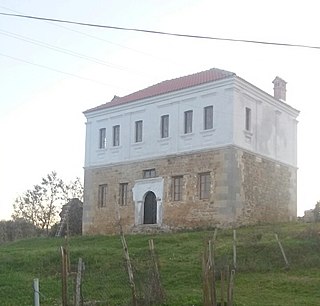
The Zeynullah Bey Tower House is a cultural heritage monument in Balince, Vushtrri, Kosovo.

The Former Historical Archive is a cultural heritage monument in Vushtrri, Kosovo.
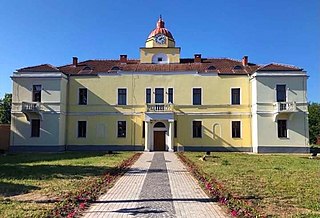
The Mahmut Gjinolli House is a cultural heritage monument in Vushtrri Municipality, Kosovo.
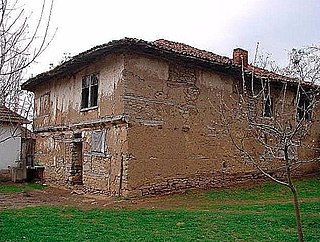
The Zymer Musiqi House is a cultural heritage monument in Cecelija, Vushtrri, Kosovo.
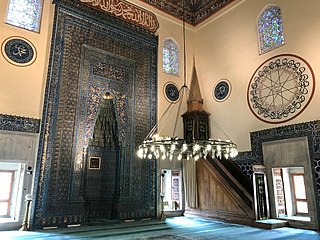
Early Ottoman architecture corresponds to the period of Ottoman architecture roughly up to the 15th century. This article covers the history of Ottoman architecture up to the end of Bayezid II's reign, prior to the advent of what is generally considered "classical" Ottoman architecture in the 16th century. Early Ottoman architecture was a continuation of earlier Seljuk and Beylik architecture while also incorporating local Byzantine influences. The new styles took shape in the capital cities of Bursa and Edirne as well as in other important early Ottoman cities such as Iznik. Three main types of structures predominated in this early period: single-domed mosques, "T-plan" buildings, and multi-domed buildings. Religious buildings were often part of larger charitable complexes (külliyes) that included other structures such as madrasas, hammams, tombs, and commercial establishments.
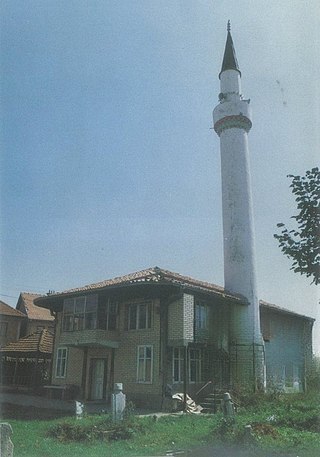
Gazi Ali Beg Mosque is a mosque located in the old core of the city of Vushtrri, 100 m away from the Old Hammam, as part of the Gazi Ali Beg Complex. Built in the 15th century, it is one of the oldest cultural heritage monuments in Kosovo.























